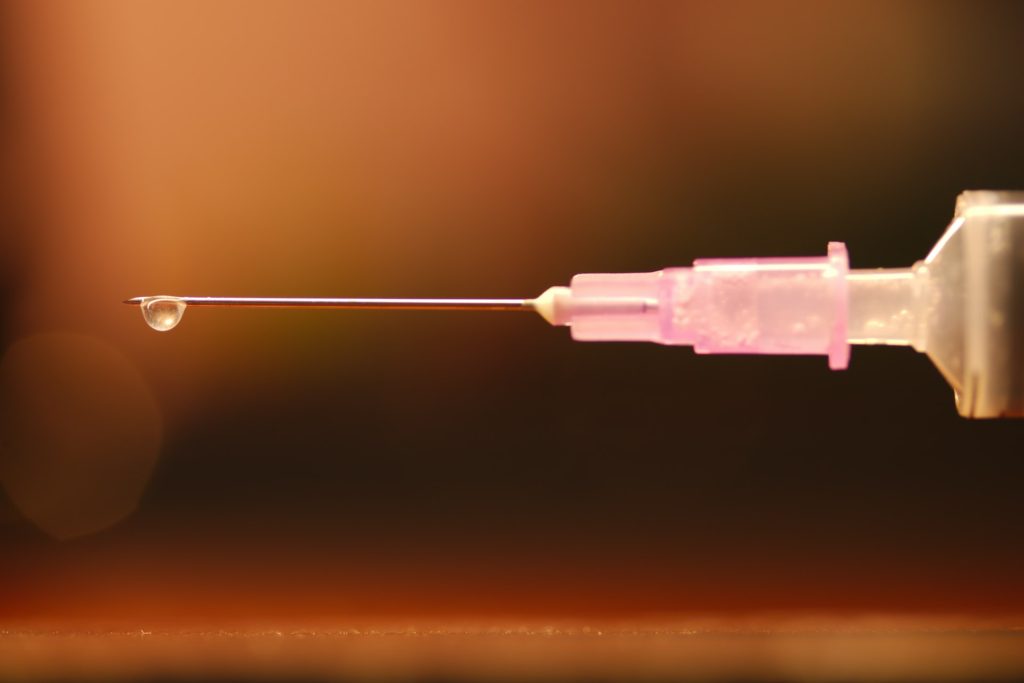Excitement Builds for Long-acting TB Treatments, but Research Still at Early Stage

By Catherine Tomlinson
Both TB treatment and TB preventive therapy involve taking lots of pills, usually for several months. Researchers are working on new long-acting formulations that might, for example, reduce an entire course of TB preventive therapy to a single injection.
The biggest HIV news of last year was that an injection containing an antiretroviral called lenacapavir provides six months of protection against HIV infection per shot. While it will be several years before the jabs become widely available, experts nevertheless hailed the development as a potential game-changer. In some countries, HIV treatment is already available as injections – containing the antiretrovirals cabotegravir and rilpivirine – administered every two months.
Scientists working on tuberculosis (TB) are trying to replicate the successes of the HIV field and develop similarly long-acting formulations of TB medicines. The good news is that they have several exciting products under development – the bad news is that the research is still at a very early stage and the pivotal studies that will tell us if these products work are likely still years away.
But if they work, they could make a big difference to patients. That is because TB treatment and TB preventive therapy mostly still requires swallowing lots of pills over a long period of time. There is some good evidence that many people would prefer long-acting injections.
The case for long-acting TB medicines
TB preventive therapy is used to stop someone suspected of having latent TB infection from falling ill with TB. In South Africa, such preventive therapy is recommended for all close contacts of someone sick with TB. Typically, it involves taking tablets for three or six months (a one-month course has been shown to work, but is not widely available). There is research that shows that the shorter the regimen the more likely it is to be completed.
The hope is that a long-acting product might do away with swallowing tablets altogether and reduce an entire course of preventive therapy to a single injection. This is likely to be more convenient for patients as well as come with the benefit of perfect treatment completion rates.
TB preventive therapy is a simpler target for long-acting formulations than TB treatment since it typically involves only one or two drugs and treatment durations are shorter. TB treatment typically takes six or more months to complete and usually involves taking four different drugs – often four for two months and then only two for the remaining four months in what is called the continuation phase. Some of the current thinking is that the continuation phase could potentially be replaced by long-acting formulations of TB medicines. This could shorten the duration of TB treatment to just two months of taking tablets.
Not an easy nut to crack
As explained by Dr Eric Nuermberger of Johns Hopkins University, not all TB medicines available as tablets make good candidates for translation to long-acting injectable formulations. He was presenting on long-acting TB drugs at the Conference for Retroviruses and Opportunistic Infections (CROI), recently held in San Francisco.
Nuermberger outlined three key characteristics that are needed for long-acting formulations. These are low water solubility (so the drug doesn’t dissolve to quickly), low clearance in plasma (so that the body doesn’t clear the drug too quickly), and high drug potency (so that a small volume of drug can be effective for a long period of time).
One key challenge, according to Nuermberger, is that scientists do not yet have reliable biomarkers to measure the effectiveness of long-acting TB preventive therapy in phase II trials. Biomarkers, such as blood levels of certain proteins, could in theory offer scientists a faster way to assess if TB preventative therapy is working, without having to monitor clinical trial participants for long periods of time to determine treatment outcomes.
Writing in the journal Clinical Infectious Diseases, scientists working to develop long-acting TB products explained: “The inability to culture or otherwise quantify viable bacteria during latent TB infection and the lack of validated surrogate biomarkers mean that there is no opportunity to obtain initial proof of efficacy… which is usually the domain of phase 2 trials. Instead, the development of new TPT regimens requires bridging directly from preclinical studies and phase 1 trials to phase 3 trials, which are themselves long and require large numbers of participants.”
However, they added that “[t]he search for biomarkers that act as prospective signatures of risk for developing TB disease is a very active research area and an important scientific priority for the field”.
Back at CROI, Nuermberger also told participants that most products in the pipeline remain at pre-clinical stages and are still being tested in mice. He explained that differences in how depot drugs — drugs released slowly over time — work in mice and humans make it hard to apply findings from mice to humans. But modeling is being done to help bridge this gap.
‘Expanded remarkably’
Despite these challenges, Nuermberger said “the number of long-acting drug formulations in development [for TB] has really expanded remarkably in the last few years, which is a very promising development”.
The product that is furthest along in the development pipeline, but still at a very early stage of research, is a long-acting form of bedaquiline. This drug is currently used for the treatment of drug-resistant forms of TB and falls in a class of antibiotics known as diarylquinolines.
The Belgian pharmaceutical company Janssen is currently running a phase I trial of long-acting injectable bedaquiline in Austria. Phase I trials are conducted in a small group of healthy individuals to assess the safety and tolerability of an experimental medicine. In the phase 1 bedaquiline trial, researchers are investigating the safety and tolerability of different doses of long-acting injectable bedaquiline.
Several other long-acting TB medicines are being investigated in preclinical research, including long-acting versions of the TB medicines rifabutin and rifapentine, as well as the second generation diarylquinolines, TBJ-876 and TBA-587, which are under development by the TB Alliance. The second generation diarylquinolines are being tested on their own and in combination with pretomanid and telacebec.
In addition, the University of Liverpool, Johns Hopkins University, University of Southern Denmark, University of North Carolina and the US pharmaceutical company Inflamamasome Therapeutics, are all involved in pre-clinical research on long-acting formulations. These efforts are supported financially by Unitaid, the US National Institutes of Health, and the Gates Foundation.
The treatments being developed include aqueous nanoparticle suspensions, in-situ forming implants, and rod implants. Aqueous nanoparticle suspensions are drugs turned into tiny particles and delivered in a water-based solution via injection. In-situ forming implants are injected as a liquid that then solidifies into an implant under the skin. Rod implants are small, rod-shaped devices inserted under the skin with a needle-like tool after numbing the area with a local anaesthetic.
What users prefer
At CROI, delegates also learned about patient and provider preferences for long-acting TB treatment.
Dr Marcia Vermeulen from the University of Cape Town presented the results of a survey involving over 400 patients in South Africa and India, as well as 94 healthcare providers.
Seventy-five percent of healthcare workers said they would prescribe a long-acting injectable product rather than pills for tuberculosis preventative therapy if it was priced the same or lower. Similarly, 75% of patients said they would try an injectable product for TB prevention if it became available.
“As a TB survivor, I am excited about long-acting TB treatment as it doesn’t require frequent facility visits, saving a person’s time and money, and can thereby increase adherence and improve treatment outcomes,” TB Proof’s Phumeza Tisile told Spotlight.
She added that communities should be at the heart of rollout plans because they understand the needs of people affected by TB and know how to communicate effectively to encourage involvement and adoption.
Disclosure: The Gates Foundation is mentioned in this article. Spotlight receives funding from the Gates Foundation but is editorially independent – an independence that the editors guard jealously. Spotlight is a member of the South African Press Council.
Republished from Spotlight under a Creative Commons licence.
Read the original article.




